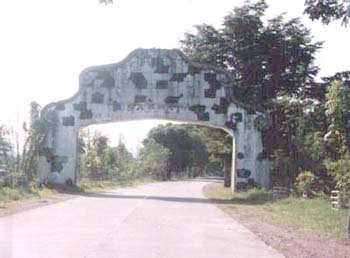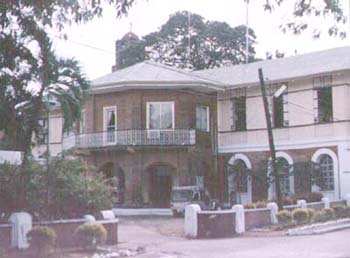

| Municipality of SARRAT |

Sarrat is nestled 7.75 kilometers east of Laoag City. The land slopes down from Pena Hill in the eastern part of the town to the Padsan River, The river snakes abruptly in the southwestern part, shaping the poblacion into a triangle form. It has a total land area of 80.7 square kilometers. The town was settled in 1721. During the later part of the sixteenth century, Minongel Banggat, a civilized Malay, and his wife, Sarrah and some families, stepped on the soil of Sarrat. Bangngat was the bravest and the most influential man; he was gradually catapulted to the top as chief. There were many bamboo clumps in the settlement; hence, they called the place "Cabayugan." The people put up crude huts, cleared the land, and planted rice and some root crops. The Padsan River afforded them a good suitable fishing place. Bangngat and Sarrah had two children named Banet and Garo. When Bangngat died, Garo became the chief. He changed the name "Cabayugan" to Sarrat in honor of his mother Sarrah. The last letters "ah" were change to "at" which was taken from the last tow letters of his father's name, Bangngat.
Three years later, the missionaries came to Sarrat. It was on September 20, 1724. They named the place San Miguel in honor of Saint Michael. September 29 was the day of the saint. It flourished as a town since then. The name San Miguel was retained until 1916. However, an act of the Philippine Legislature changed it again to Sarrat which was the former name. Geographically, Sarrat is the most unique of the towns. Its southern portion is isolated by a winding river from its east central section where the municipal hall is located. The river can be crossed by jeep or bus during dry months from both sides of the provincial road leading to the towns of Dingras and Piddig. Sarrat is a small but rich town. The people are engaged in many different occupations. Farmers produce plenty of vegetables, rice, tobacco, sugarcane, and garlic, and they have already adopted modern techniques of agriculture. Fishing is also an industry. The Padsan River provides them a good fishing ground teems with fresh water fishes like bukto, dalag and gurami. The women weave blankets, bedspread, and towels which are sold in the market or exported abroad. Furniture and upholstery making also count in the municipality. These are done with the assistance of the National Cottage Industries Development Authority (NACIDA). It is noted for its local wine, basi, which is extracted from sugarcane. |






